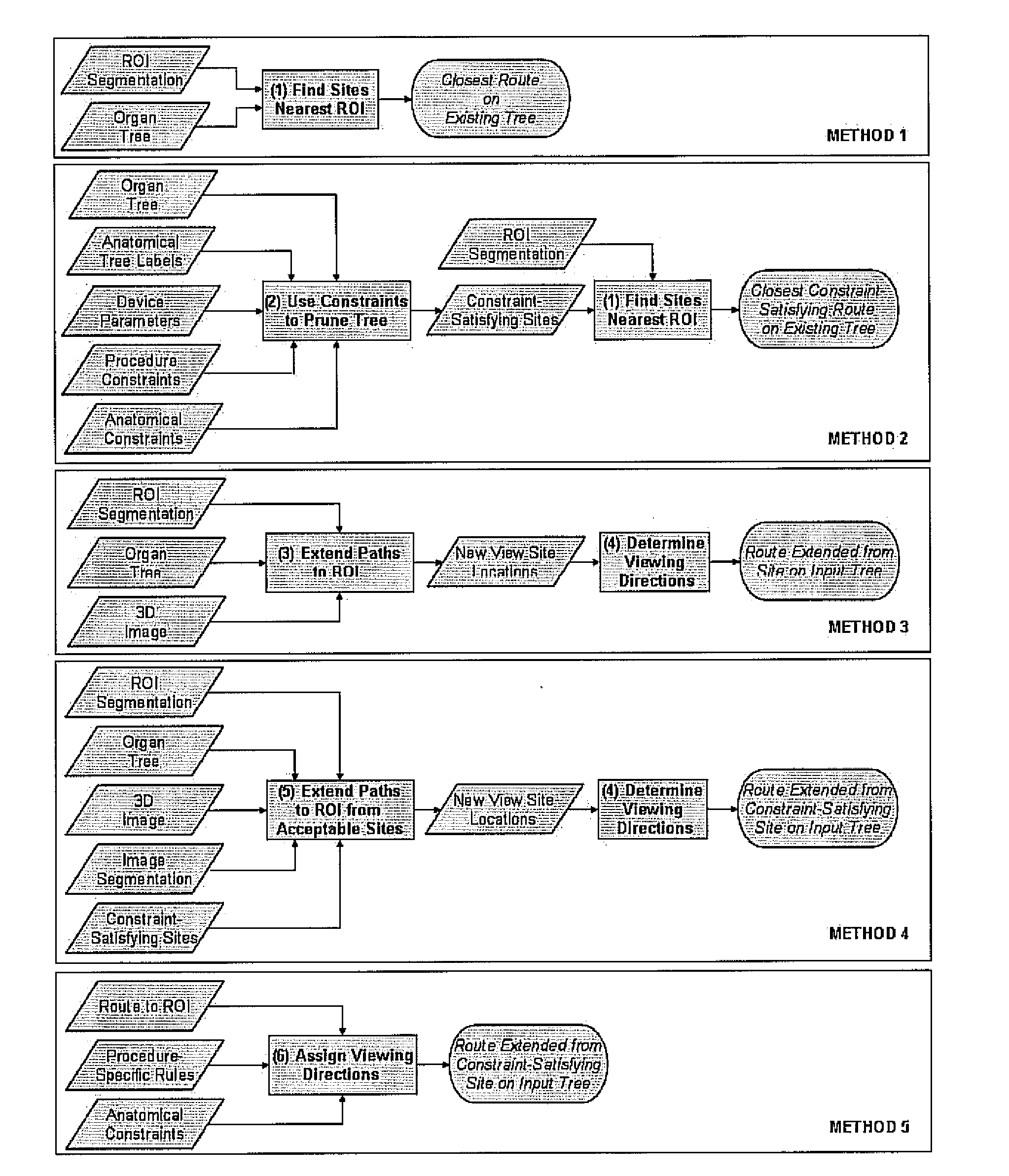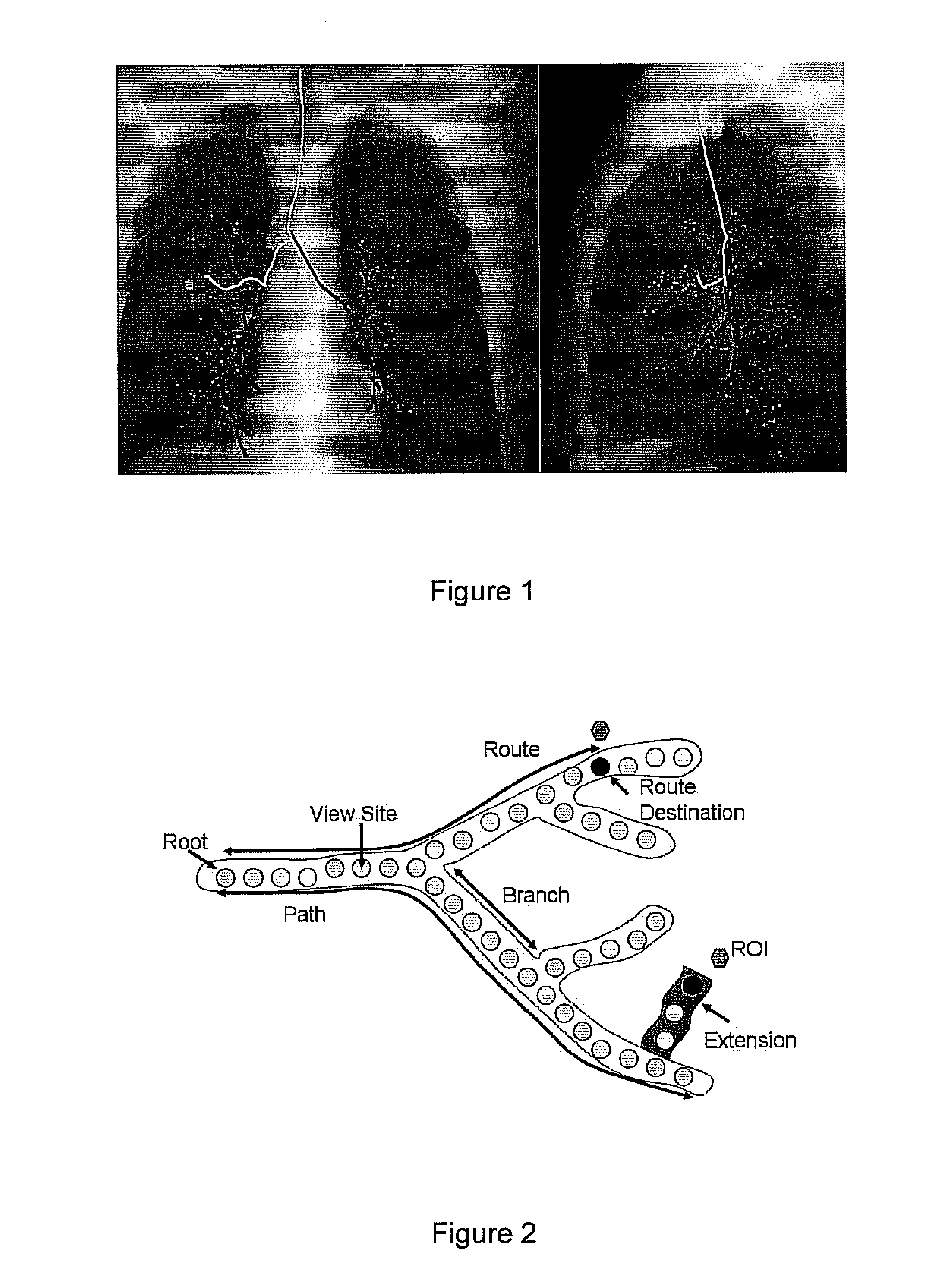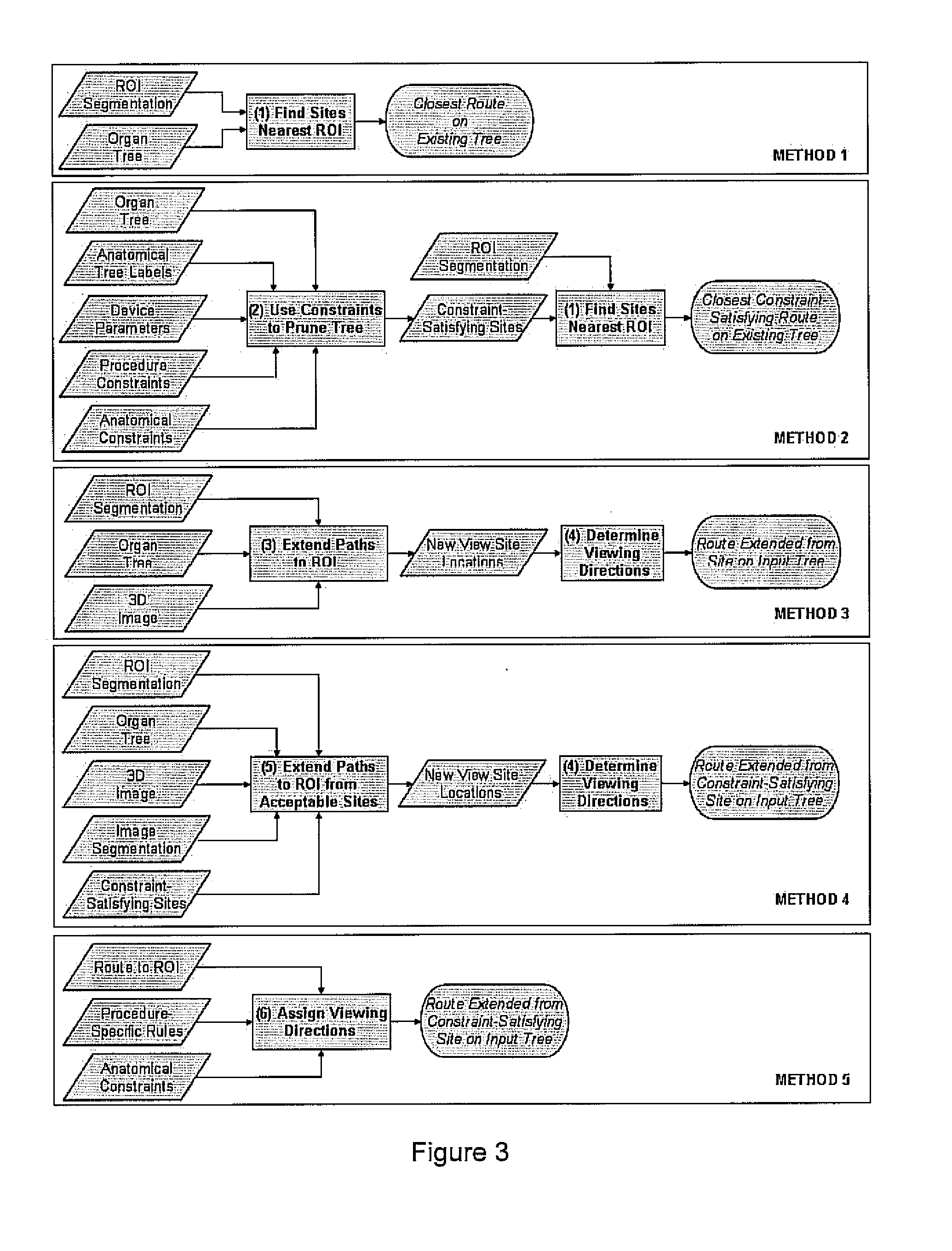Methods and apparatus for 3D route planning through hollow organs
a hollow organ and route planning technology, applied in the field of medical imaging, can solve the problems of difficult mental defining the 3d relationship between the endoscope, the airway, and the target roi as depicted in the mdct data and the video feed, and difficult to determine the appropriate route through the organ to the target location
- Summary
- Abstract
- Description
- Claims
- Application Information
AI Technical Summary
Benefits of technology
Problems solved by technology
Method used
Image
Examples
Embodiment Construction
[0044]We have developed methods for automated route-planning, drawing upon 3D images, that assists follow-on navigation through hollow branching organs. In our work, we focus on MDCT images of the chest wherein the goal is to navigate through the airway tree, often for the treatment and assessment of lung cancer. In this paradigm, we restrict the routes to be contained within a patient-specific model of a tubular organ such as the colon or airway tree.
[0045]This invention resides in automated techniques for 3D route planning that: (1) locate the closest paths to a target ROI and (2) extend an incomplete path, if necessary, so that it reaches the ROI. Given a 3D medical image, our methods take as input: (1) precisely defined ROIs; (2) a segmentation of the branching organ through with the endoscopic device will navigate; (3) centerlines (paths) through the segmented organ; and (4) parametric description of the endoscopic device.
[0046]We use existing methods for branching-organ segmen...
PUM
 Login to View More
Login to View More Abstract
Description
Claims
Application Information
 Login to View More
Login to View More - R&D
- Intellectual Property
- Life Sciences
- Materials
- Tech Scout
- Unparalleled Data Quality
- Higher Quality Content
- 60% Fewer Hallucinations
Browse by: Latest US Patents, China's latest patents, Technical Efficacy Thesaurus, Application Domain, Technology Topic, Popular Technical Reports.
© 2025 PatSnap. All rights reserved.Legal|Privacy policy|Modern Slavery Act Transparency Statement|Sitemap|About US| Contact US: help@patsnap.com



